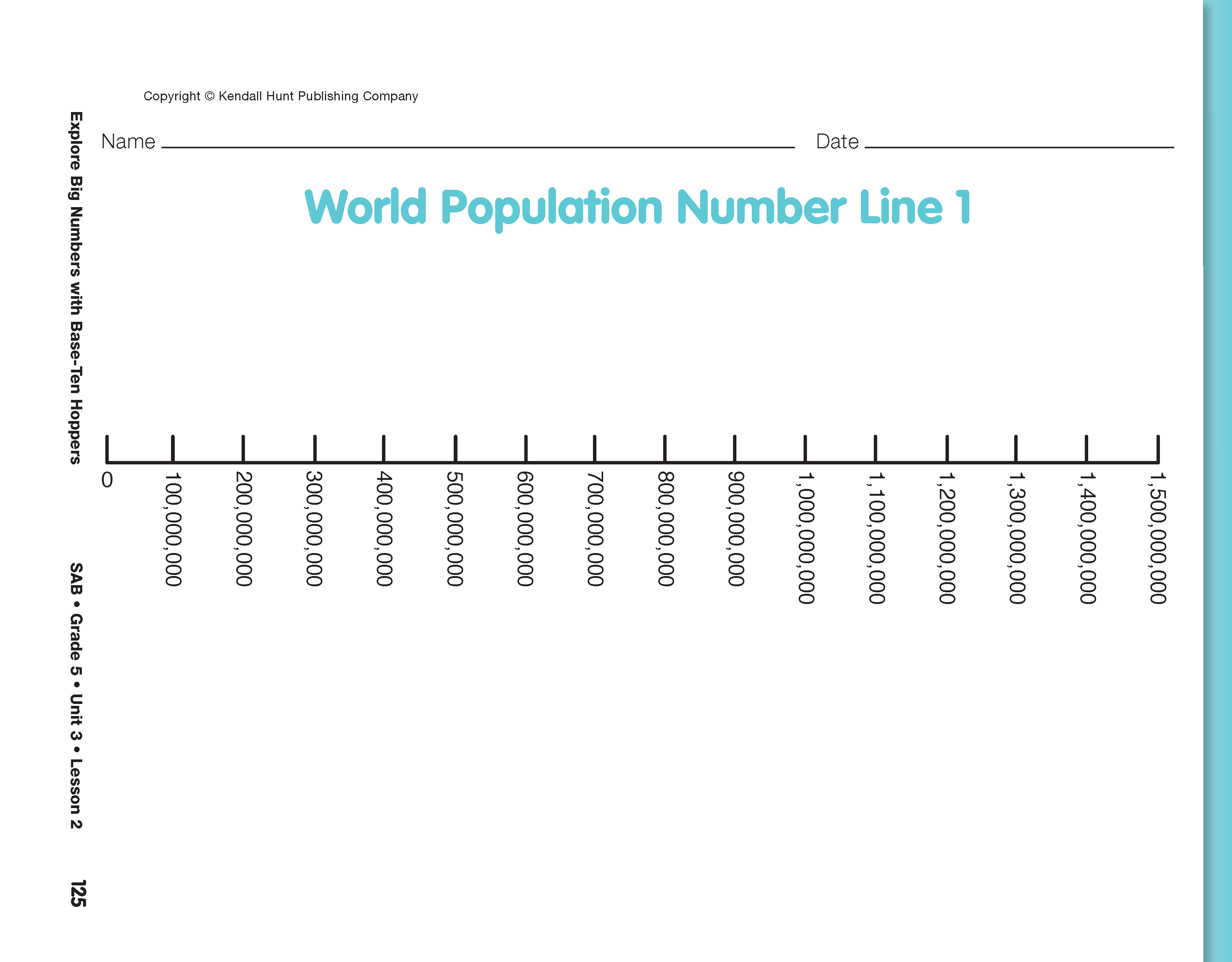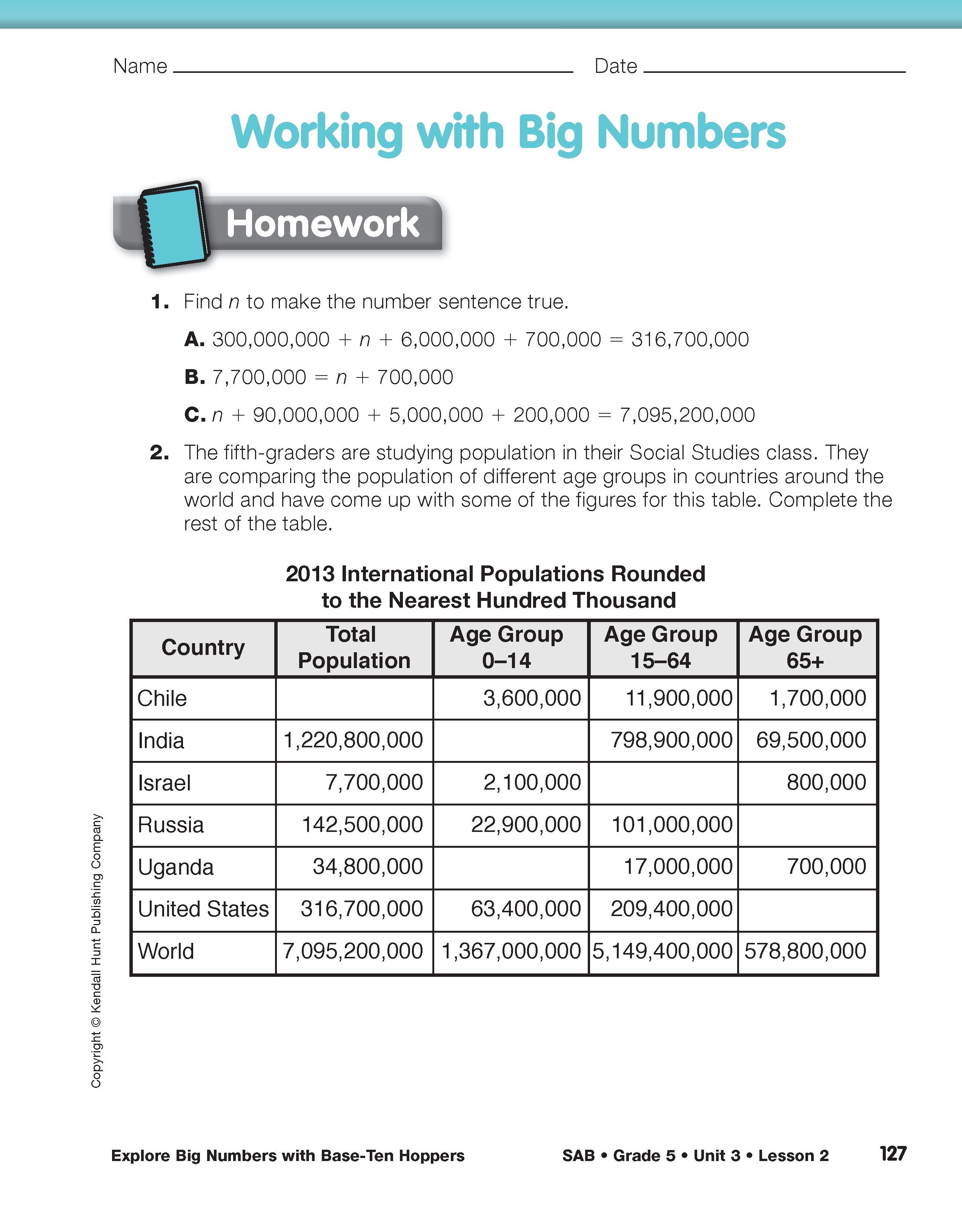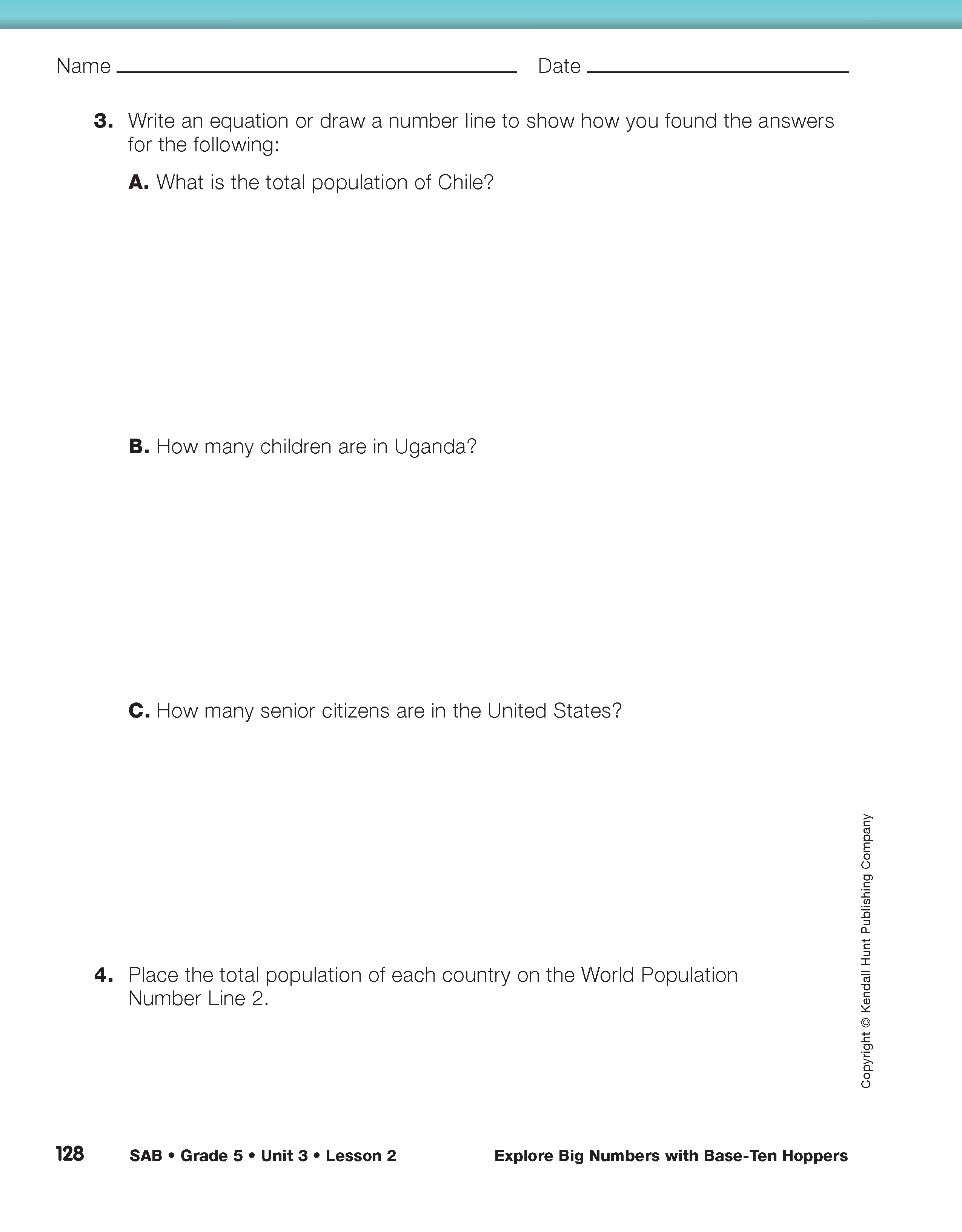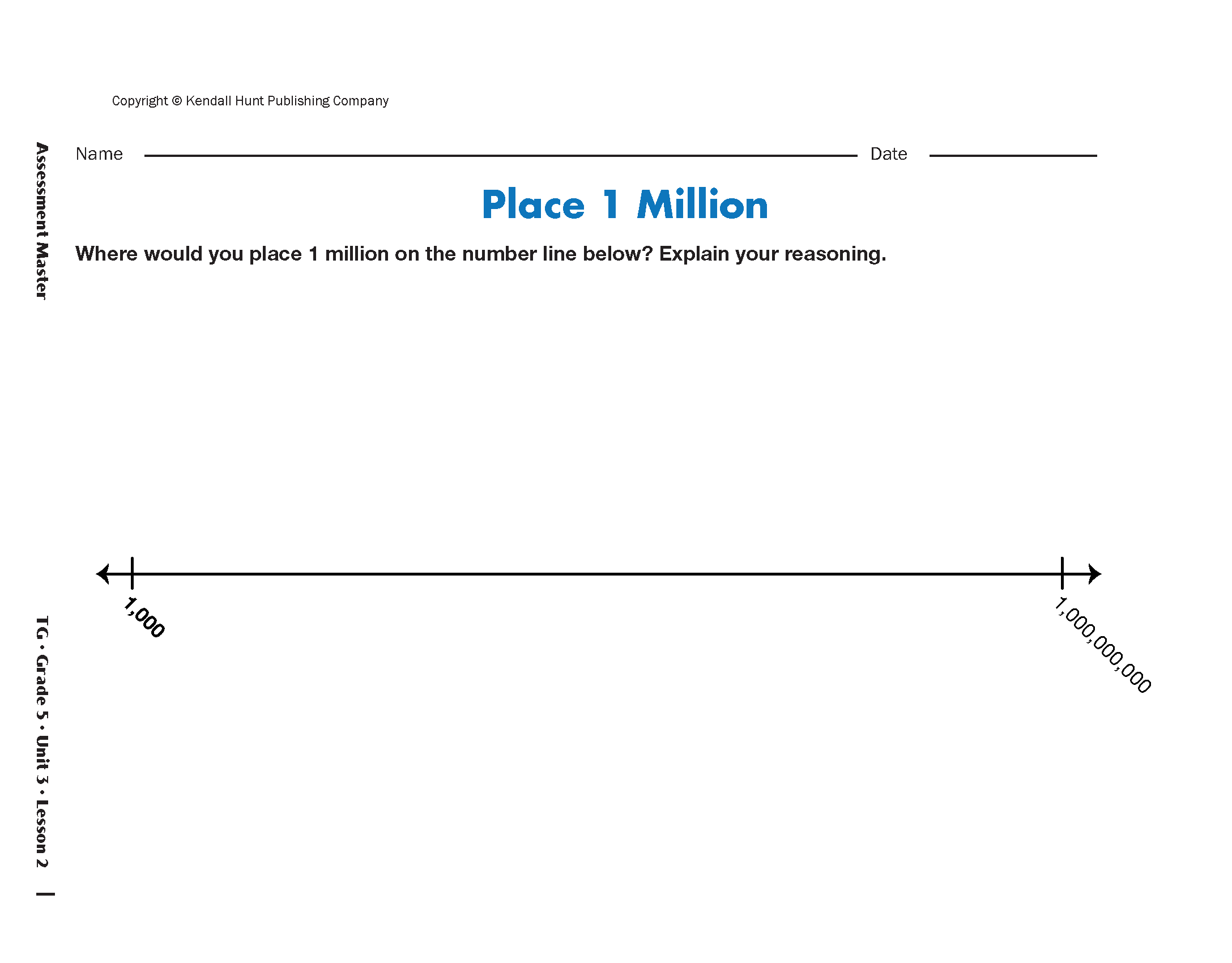Use Homework Question 4 in the Student Activity Book to summarize the lesson. If students have not already completed this question for homework, you may have them solve it with a partner in class.
Display a blank copy of World Population Number Line 2 from the Student Activity Book.
- Which population is the smallest? How do you know? (Israel. Its population is closest to zero on the number line.)
- Where should we place the population of the United States? (The United States' population of 316,700,000 lies between 300,000,00 and 400,000,000.)
- What is the difference between the population of the United States and India? How do you know? (904,100,000. Have students share different ways to solve this problem such as the counting-up strategy, moves of the base-ten hopper on the number line, or using an equation or number sentence such as 1,000,000,000 + 200,000,000 + 20,000,000 + 800,000 = 300,000,000 + 10,000,000 + 6,000,000 + n + 700,000.)
Ask other students to explain where other countries from the list should be placed on the number line.
Assess students' conceptual understanding of the size of big numbers with the Place 1 Million Assessment Master in the Teacher Guide.
Before the students work on solving the problem, refer them to the Math Practices in the Student Guide Reference section. For this question, focus on MPE2, 3, and 5.
Ask students to discuss with their partner how they would apply the Math Practices to the problem.
- Look at Math Practice 2. What do you need to include in your explanation to show that you chose a good and efficient strategy for solving the problem?
- Look at Math Practice 3. How will you check to see if your solution makes sense? Can you use another strategy to check your answer?
- Look at Math Practice 5. How will you show how your answer makes sense so that someone else can understand your thinking?
Have students work independently to solve the problems. After collecting their work, display the Place 1 Million Assessment Master. Make a tick mark in the middle of the line. Let the students know that this is the most common response to this question.
- What do you think? Is one million halfway to one billion? Why or why not?
- Ask a couple of students to show the tick marks they used on the number line to find the answer.
Have one student make a number line with tick marks by 100,000,000 going to a billion and find the halfway point (500,000,000). See Figure 3.
Use the Place 1 Million Assessment Master in the Teacher Guide with the Feedback Box to assess students' abilities to compare and order larger numbers [E2]; find a strategy [MPE2]: check for reasonableness [MPE3]; and show work [MPE5].


















